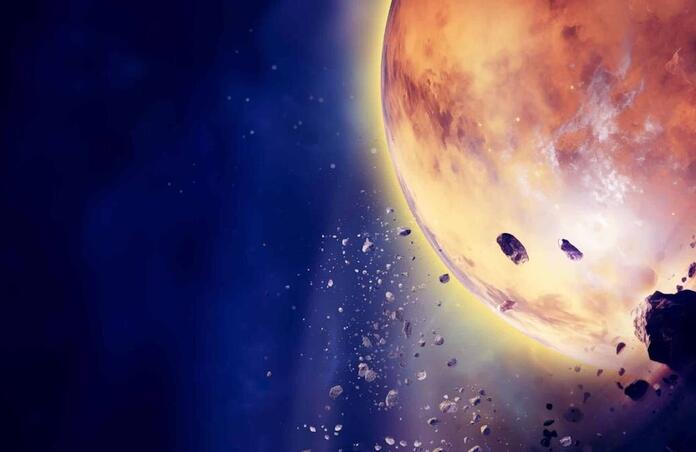1 in 12 stars found to eat planets

A recent study has reported that 1 in 12 pairs of stars may have engulfed a planet, aiding our understanding in the well-known ‘three-body problem’. Such findings are extremely important for astrophysicists, since they challenge previous beliefs about the dynamics of star and planet evolution.
The rules which control the orbits of two bodies in space are well understood by physicists, however, when a third comes into play, the complexity of the situation increases. This leads to unpredictable instabilities in which an object could be ejected into space or inspiral into its host star. One of the many obstacles needed to be overcome to address this problem is to better understand how common such instabilities are.
The new study, published in Nature by researchers from ARC Centre of Excellence for All Sky Astrophysics in 3 Dimensions (ASTRO 3D) have started to uncover information regarding this obstacle. Involving a survey of nearby stars, it was found that 1 in 12 stellar pairs may have consumed a planet, resulting from the development of a wobble within the planetary orbit. At least 8% of pairs in their sample exhibit chemical anomalies, indicating that one star had engulfed planetary material that once orbited it.
In order to remove other explanations for these chemical signals, the team focused on twin stars. Such pairs are born at the same time from the same molecular cloud, hence are expected to possess the same compositions. The survey is part of the Complete Census of Co-moving Pairs of Objects survey (C3PO), comprising a sample of spectroscopic data from 91 pairs of twin stars, the largest sample of its kind.
It was observed that some stars had differences in their composition when compared to their respective twin. A distinct chemical pattern where higher amounts of elements such as iron, nickel and titanium were seen compared to carbon and oxygen, indicating that the star had devoured a planet.
This discovery is significant since these signals are being seen in main sequence stars rather than red giants, who engulf planets during late stages of their life cycles. This signifies a more dynamic relationship between stars and their orbiting planets during earlier stages than was previously thought. However, another possibility to be considered as that the stars are absorbing material from a protoplanetary disk.
From simulations, the instability may be common in the early stages of a planetary system e.g. first million years. However, any traces left behind from the engulfment of planets during this period would be undetectable in the stars observed since they are billions of years old. Thus, the chemical anomalies detected in the teams sample were caused by more recent instabilities which caused the engulfment.
Such a finding is not completely unexpected- planetary dynamics theorists have stated that many planetary systems are known to be unstable, in particular, those which have a super-Earth: a planet larger than Earth but much smaller than the giant planets. Additionally, this highlights how our solar systems stability is not as normal throughout the universe as we think, making us more unique.
--
Cover image: Intouchable/ Openverse
Journal source: Fan Liu et al, At least one in a dozen stars shows evidence of planetary ingestion, Nature (2024). DOI: 10.1038/s41586-024-07091-y
